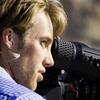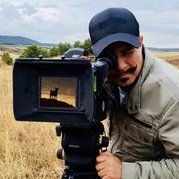-
Posts
61 -
Joined
-
Last visited
Profile Information
-
Occupation
Cinematographer
-
Location
Los Angeles
Contact Methods
-
Website URL
http://www.JeremyMLundborg.com
Recent Profile Visitors
-
Curious about what the new series of "24" is shooting with? They used to shoot film. Is this still the case? Thanks.
-
Throwing out a wide net for advice on shooting for an iphone/ipad app that will contain video. First time I've attempted this and want the client to easily utilize the footage after we get done shooting, not confused as to where and why to crop or resize. Looking at the aspect ratios in the photo attached, both are different but shouldn't require cropping or stretching with 5D video footage at 1920x1080 when used in landscape mode. I don't have an iphone so any notes on how color responds and resolution differences would be helpful. Have you seen video on your computer screen and then your iphone and noticed a huge difference? Even the most basic things along those lines would be helpful.
-

Cinematography Books for Starting Out?
Jeremy M Lundborg replied to Jeremy Val's topic in Books for the Cinematographer
Any of these books have specific examples of images and the correlating lens? -

Set work in Asia
Jeremy M Lundborg replied to Jeremy M Lundborg's topic in Business Practices & Producing
So. My own experience on a mid-range commercial shoot in Taiwan: -No union. 24 hour shoot day? Same rate. Late lunch, too bad. Short turn around? Change your occupation. -2nd ACs lay the dolly track. Ouch! -Very few wireless video options. RF signals are crowded and most don't offer solid systems. Teradeck was a constant conversation, but I can't stand the delay. The steadicam op dragged a system out of his dungeon, wasn't great but better than nothing. Not sure if we didn't have the right equipment houses or this is a pervasive issue. -Grip and electric...same thing. -Mark Lee. Big fan. Can't say I was appalled or surprised. Was generally a bit disorganized. Everything else is nearly the same. Show up, get it done. Hopefully some of this is useful to someone else in the future. -
I have a production shooting soon in Taiwan. I have not had the opportunity to shoot on that side of the world yet and was hoping someone had some notes about working on sets in Asia, specifically Taiwan, which I would imagine is close to how China proceeds. I mostly concerned about etiquette, differentiations in division of labor, and the possibility of not understanding how the production is being run, in case some things are wildly different. All of this specifically compared to set work in the United States. Is it super fast, super slow? As the DOP are different things expected of me than in the US?
-
I recently shot a feature utilizing one of each camera. For budget reasons we ended up with rental issues that unfortunately required I use one or the other during parts of the shoot (don't ask, one of those productions). For my specific uses on the film, I found the EX1 to be a little more ergonomic and easier to use. The EX3 is notably bigger and again, for my needs, over-sized for the way it was used in our production. To reiterate some of the answers above, I felt that with appropriate care to transfer the same look notes to each camera, and back, there were no noticeable differences in the look. It should be said I was recording using a NanoFlash from Convergent Design, allowing recording to Compact Flash in place of SxS cards. We did this for budgetary reasons (SxS cards are incredible expensive!) and to lessen out of camera compression. For easier eyepiece operation, I'd concur the EX3 is the better choice. But if there is a strong difference in after market price, I'd say the EX1 will keep you in good stead as well.
-

Transformers 3
Jeremy M Lundborg replied to David Mullen ASC's topic in On Screen / Reviews & Observations
In case anyone missed it... http://www.darkhorizons.com/news/21560/two-more-weeks-of-baysploitation-in-imax Now I have to go see it to learn what not to do, according to the complaints in this thread. -
I would like to know what I can expect to be asked as a Camera Operator for a multi-cam television show in a studio. While I have worked independently as a cinematographer and I know what I would like my camera operator to do on said independent films, I have very little knowledge of how TV and upper level studio shoots work. My question relates specifically to what I should be ready to do upon arrival in the studio, then during and after shooting. Any thoughts beyond 'frame it well!" are appreciated. Maybe even some anecdotes from previous experience?
-

Camera Sliders
Jeremy M Lundborg replied to Ferdinand Casido's topic in Camera Assistant / DIT & Gear
In terms of malleability and mobility, ie traveling and using your sliders of choice, what can you recommend that isn't too cumbersome? One that might travel easily and still be sturdy enough for everyday shooting scenarios. -

Directors Viewfinder
Jeremy M Lundborg replied to Mark.Smith's topic in Students, New Filmmakers, Film Schools and Programs
I second this ideal. I use it to avoid moving around larger camera systems too much in the broadest sense, allowing me to move the camera once and fine tune it in place. This in opposition to shoving it around which wastes time and well, sometimes it just happens. If you can get your hands on a viewfinder with lens mount, use your lenses and that viewfinder to get a better approximation of your exact frame with the lens you will be using. Otherwise, the Mark Vs are a great all-around tool. Like Brian said with an hdslr you are ready to go, just take it in hand, turn it on, and frame it up to your liking, then move the rest of your equipment. Although if you have money, don't let it stop you from being a fantastic tool for scouting and future productions. I found mine on craigslist for a great price after a few years of patience and I use it all the time. -

Special effects Cinematography
Jeremy M Lundborg replied to Jad Beyrouthy's topic in Books for the Cinematographer
I found the VES Handbook very useful as a somewhat detailed note on general VFX practices. I originally read it in the hopes of getting a better knowledge of where VFX artists and supervisors are coming from, making their jobs easier and the outcome(project) stronger. I also used it to further understand those practices in the hopes of being better prepared for processes I had no experience in thus far, and of course glean some little tricks here and there. It's the equivalent of the ASC bible in terms of pages (900+), but doesn't have as many technical charts. There are pretty pictures, though! -

Best cinematography in a documentary?
Jeremy M Lundborg replied to Maximilian Schmige's topic in Cinematographers
Among many of those mentioned above, I highly recommend for their visual quality and moving content: Workingman's Death (2005) - dir. Michael Glowagger Searching For The Wrong Eyed Jesus (2003) - dir. Andrew Douglas -

sony ex3 live on the set capture using hd-sdi
Jeremy M Lundborg replied to Thangjam Bicky Chengleicha's topic in Sony
You can also attempt to utilize the Nanoflash from Convergent Designs. Records out of HDSDI to 422 and compact flash cards, which are much cheaper than SxS (which hits you with the inherent EX3 compression). If you are on a stage shoot you should be fine linking directly to a capture card, but if you need to be more mobile, look it up. The AJA Ki-Pro is another option with great results, and it's in between the malleability of the Nanoflash and the lock-down of a capture card in terms of size. -
Can't say enough about this film...Stunning imagery.
-
We've been lucky out here in Los Angeles as the American Cinematheque shows it quite often. I recall seeing it two times in less than 6 months at the Aero and Egyptian respectively. That said, it's only Los Angeles so no help there. Spirit Of Baraka usually has fans keeping tabs on screenings on the site and in e-newsletters. I hope that once Samsara comes around, maybe we will get a double feature roadshow of some sort. A person has to have dreams, right?




